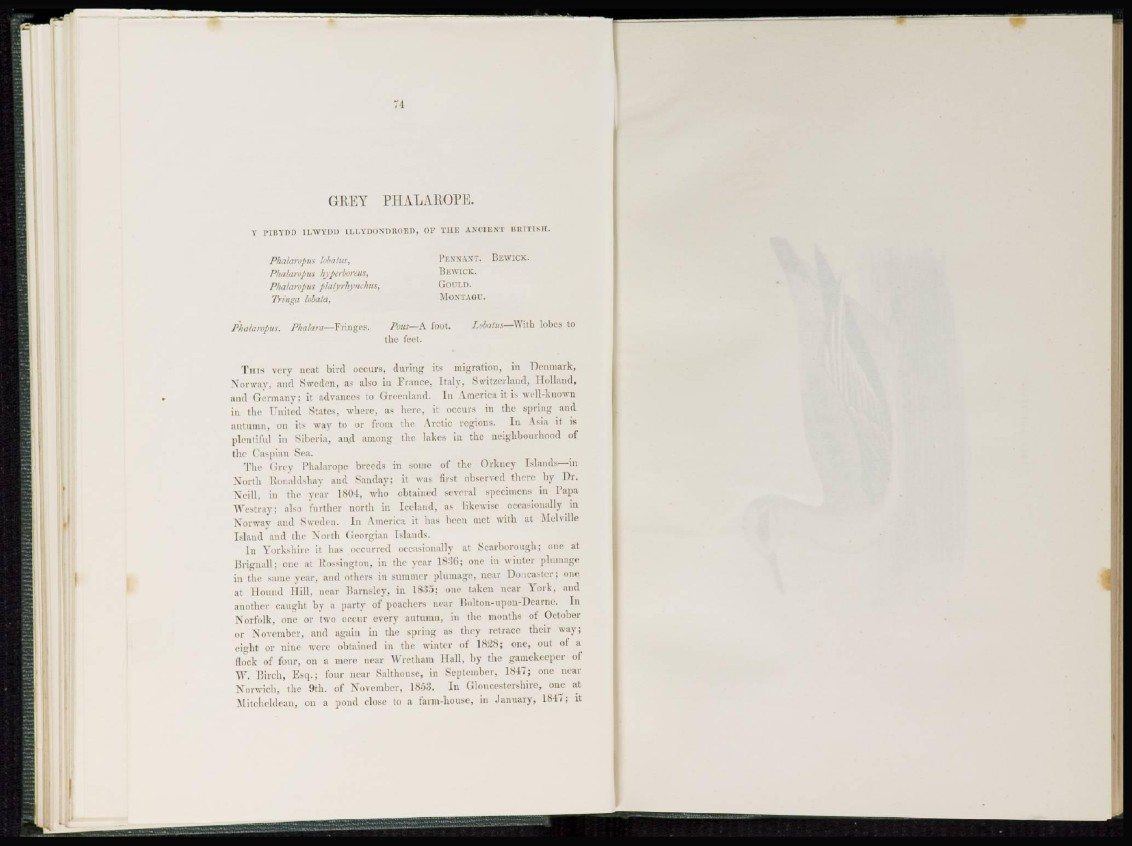
GUEY PIIALAltOPE.
V PIBYDD Il.YV'Yim ILLYDONDttOED, OF THE ANCIENT BRITISH.
Phaiarvpus loda/us, PENNANT. BEWICK.
Phahiropus hypaborais, BEWICK..
Phakiropus phi/vrhymhus, GOULD.
TVmga loiala, MONTAGU.
Phalaropus. Phalara—Fringes. Pom—A foot. Lobalus—With lobes to
the feet.
THIS very neat bird occurs, during its migration, in Denmark,
Norway, and Sweden, as also in France, Italy, Switzerland, Holland,
and Germany; it advances to Greenland. In America it is well-known
in the United States, where, as hen-, it occurs in the spring and
autumn, on its way to or from the Arctic regions. In Asia it is
plentiful in Siberia, an,d among the lakes in the neighbour hood of
the Caspian Sea.
The Grey Phalarope breeds in some of the Orkney Islands—in
North Ronaldshay and Sanduy; it was first observed there by Dr.
Xeill. in the year 1804, who obtained several specimens in Papa
Wcstray; also further north in Iceland, as likewise occasionally in
Norway and Sweden. In America it lias been met with at Melville
Island and the North Georgian Islands.
In Yorkshire it has occurred occasionally at Scarborough; one at
Jirignall; one at Rossington, in the year 1836; one in winter plumage
in the same year, and others in summer plumage, near Doucaster; one
at Hound Hill, near Ilarnsley, in I8S5; one taken near York, and
another caught by a party of poachers near llolton-upon-Dcarne. In
Norfolk, one or two occur every autumn, in the months of October
or November, and again in the spring as they ret race their way;
eight or nine were obtained in the winter of 1828; one, out of a
flock of four, on a mere near Wretham Hall, by the gamekeeper of
W. Birch, Esq.; four near Salthouse, in September, 1847; one near
Norwich, the 9th. of November, 18o3. In Gloucestershire, one at
Mitcneldean, on a pond close to a farm-house, in .January, 1847; it